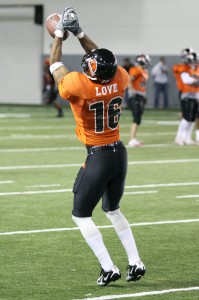
Swedish nursery school teachers and LGBT groups have banded together over the addition of a gender-neutral pronoun to the official Swedish language. It all started five years ago. These two groups were among the first to use the gender-neutral hen as an alternative to the female pronoun hon and the male han. Now the common, conversational use of hen has led the Swedish Academy to include it in the newest edition of the country’s official.
In the Washington Post, linguist Sofia Malmgård explains that there are two ways to use the new pronoun:
First, if the gender is unknown or not relevant (as in: “If anyone needs to smoke, ‘hen’ may do so outside”). Second, it can be used as a pronoun for inter-gender people (as in: “Kim is neither boy or girl, ‘hen’ is inter-gender”).
In other words, the pronoun provides a way to talk about someone and disregard hen’s gender when it doesn’t matter or doesn’t conform to the traditional masculine/feminine binary.
In Sweden, ranked fourth on the World Economic Forum’s 2014 gender equality report, gender-neutral education is in vogue. Nurseries, kindergartens, and preschools have been at the forefront of the movement to help children grow up without feeling the impact of gender biases. At Egalia, a preschool in Stockholm, traditionally gendered toys and games are placed side-by-side to encourage children to choose by preference rather than convention; students are not referred to as male or female; and gender-neutral books line the shelves.
LGBT groups have also embraced the new pronoun as a way to raise awareness. Experts are cautiously optimistic that officially recognizing the word will encourage more people to use it., Lann Hornscheidt, a professor of Scandinavian languages and gender studies, believes hen really will help fight sexism and gender biases. As he told the Post,
The introduction of a pronoun which challenges binary gender norms has been an important step, following a more thorough debate over the construction of gender within the last 10 years.





